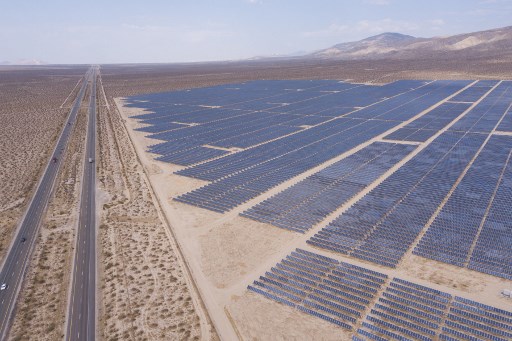
403
Sorry!!
Error! We're sorry, but the page you were looking for doesn't exist.
Capacity of Iran's renewable power plants reaches 1,200 MW
(MENAFN) Iran's renewable power plants have achieved a notable milestone, with their capacity now reaching 1,199.71 megawatts (MW), as per the latest data from Iran's Renewable Energy and Energy Efficiency Organization (SATBA). Wind power plants contribute 31 percent of this capacity, amounting to 366.3 megawatts, while solar power plants dominate with a 58 percent share, equating to 529.9 megawatts. Additionally, small hydropower plants account for 9 percent of the total renewable power capacity with 103.67 megawatts, biomass power plants hold a one percent share with 12.5 MW, and expansion turbine power plants also contribute one percent with 9.6 MW.
The Iranian government has been proactive in promoting the growth and development of renewable energy. Key measures include diversifying financing models for renewable projects, increasing the ceiling for guaranteed electricity purchases, enabling the buying and selling of renewable electricity on the Iran Energy Exchange's green board, and facilitating the export of renewable electricity. These initiatives aim to bolster the sector significantly.
A major goal set by the Iranian Energy Ministry is to add 10,000 MW to the country's renewable power plant capacity by the end of the current administration in August 2025. Considering that the renewable power generation capacity was around 800 MW when the current government took office in August 2021, this would represent a 13-fold increase in capacity.
To support this ambitious expansion, in January 2022, the Energy Ministry signed memorandums of understanding (MOUs) with various private contractors for the construction of new renewable power plants across Iran. Reflecting the effectiveness of these efforts, the electricity generated by renewable sources saw a 28 percent increase in the third Iranian calendar month of Khordad (ending June 20) compared to the same month in the previous year. This growth underscores Iran's commitment to enhancing its renewable energy infrastructure and reducing reliance on conventional energy sources.
The Iranian government has been proactive in promoting the growth and development of renewable energy. Key measures include diversifying financing models for renewable projects, increasing the ceiling for guaranteed electricity purchases, enabling the buying and selling of renewable electricity on the Iran Energy Exchange's green board, and facilitating the export of renewable electricity. These initiatives aim to bolster the sector significantly.
A major goal set by the Iranian Energy Ministry is to add 10,000 MW to the country's renewable power plant capacity by the end of the current administration in August 2025. Considering that the renewable power generation capacity was around 800 MW when the current government took office in August 2021, this would represent a 13-fold increase in capacity.
To support this ambitious expansion, in January 2022, the Energy Ministry signed memorandums of understanding (MOUs) with various private contractors for the construction of new renewable power plants across Iran. Reflecting the effectiveness of these efforts, the electricity generated by renewable sources saw a 28 percent increase in the third Iranian calendar month of Khordad (ending June 20) compared to the same month in the previous year. This growth underscores Iran's commitment to enhancing its renewable energy infrastructure and reducing reliance on conventional energy sources.

Legal Disclaimer:
MENAFN provides the
information “as is” without warranty of any kind. We do not accept
any responsibility or liability for the accuracy, content, images,
videos, licenses, completeness, legality, or reliability of the information
contained in this article. If you have any complaints or copyright
issues related to this article, kindly contact the provider above.


















Comments
No comment